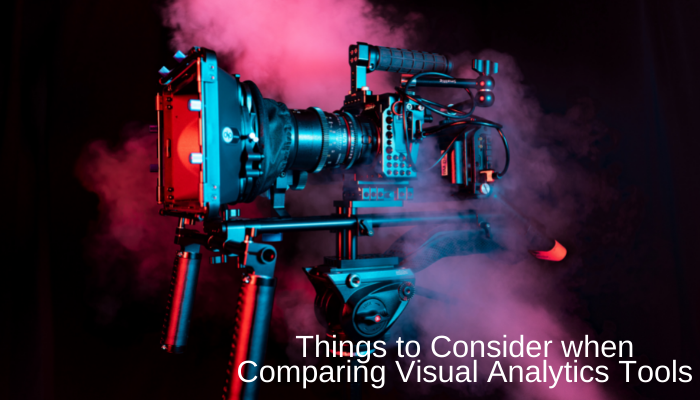Although there are many different visual analytics tools out there, they all do pretty much the same thing in different ways and with slightly different interfaces. If you’re considering using one of these tools, there are a few important things to consider before making your decision on which tool to use in your company’s strategy for visual analytics.
Who will use the tool?
When considering a tool for visual analytics, think about who will be using it and what kind of visualizations you want them to create. If your business depends on data scientists creating reports, it might make sense to invest in a powerful tool.
If you want other departments at your company to generate their own visuals, consider a solution that’s quick and easy to use. You may even want multiple tools in your arsenal each with its own purpose and target audience.
What kind of data can you visualize?
Before choosing a visual analytics tool, you should know exactly what type of data you plan on visualizing. Different tools are better at different things, so make sure that you choose one that is optimized for your specific use case.
For example, if your business is more heavily skewed towards BI and reporting, consider solutions like Tableau Public or IBM Watson Analytics. If you need something a bit more robust and enterprise-level with deep functionality, check out offerings from companies like SAP or SAS.
Make sure you take into account not only how these solutions can handle various types of data but also how they visualize it. Some are designed around basic charts while others include more advanced features such as 3D maps and automated dashboards.
How does the tool work?
Depending on how you plan to use visual analytics in your work, you’ll want a tool that is easy to integrate into your existing workflow. For example: if your objective is simply creating dashboards, you may want something easy to implement like Tableau or Power BI.
However, if you want to dig deeper and leverage interactivity features such as drill-down and filters. You may want a more robust tool such as Silk or Spotfire (previously Sisense). When considering how a tool works, think about its capabilities before settling on one price. And ease of implementation are considerations but they shouldn’t be at the top of your list.
How much do tools cost?
While there are some free options on visualization tools, most business will have a limited budget. Just like any other software program you might want to invest in, your budget is an important factor. For example, Tableau is more expensive than Google’s Data Studio but is known for being easy-to-use. And capable of handling large amounts of data.
Data studio may be simpler to use and free, but it isn’t as powerful as Tableau. While ease-of-use and cost are both factors that should be considered carefully before deciding which visual analytics tool to purchase, there are other considerations that should also influence your decision.
Will you need help from a vendor?
Most analytics software comes with either community or professional support options. If you need assistance configuring your visual analytics tool or even with how to effectively use it, having help from a vendor can be a huge asset. However, if you’re comfortable doing a lot of self-taught work, professional support may not be as necessary for your organization.
In that case, community support could be your best bet. Either way, keep in mind that most vendors charge for support options so price them into any comparison you make between products. You may find yourself saving money in other areas. If you opt for an open source solution that doesn’t come with any additional charges.
How are your skills in this area?
A question you may not consider is how skilled you are in using visual analytics tools. Do you have a high level of proficiency? If so, you’ll likely be able to move quickly from one tool to another. As there isn’t likely much of a learning curve.
Does your team lack familiarity with visualization tools? In that case, invest more time evaluating and testing new products before committing to them.
Also consider whether or not your data requires some sort of programming. Or configuration before it can be analyzed certain tools can make these tasks easier than others.
Read more: The Ultimate Revelation of BPA Services
Are there other internal support systems in place?
While you want a solution that you can use on your own. It’s also important to consider whether or not other departments within your organization are using complementary systems. For example, if you need data analysts who are familiar with SQL, you should look for a solution that is compatible with SQL.
If other departments aren’t using similar programs and services, such as a CRM system, then perhaps some sort of training will be necessary.
Of course, if other teams are using different services than what your new platform offers (such as Tableau instead of Power BI), then there may be opportunities for synergy between departments. It’s best to think of visual analytics tools as part of an overall information management strategy rather than in isolation from everything else going on within your company.
Conclusion
Many of these tools are free or offer a free trial, so take advantage of them before deciding on what’s best for your needs. Be sure to evaluate each tool based on your specific goals and objectives.
Each tool has unique features, so consider your needs and experiment with different solutions. No single vendor is likely to provide all that you need, but after looking at several different solutions. You will be able to identify which one is best for you.
Also don’t forget that some vendors offer add-on modules that can extend their functionality beyond. What is available out-of-the-box an important point as you begin extending. Beyond just data visualization and into visual analytics!

